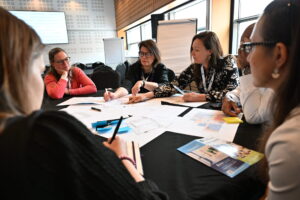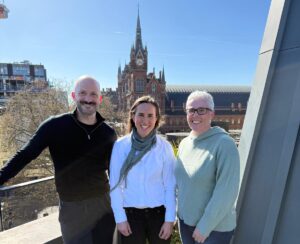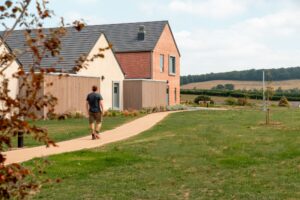An interview with Ellen, a Lived Experience Expert with the Design In Mental Health Network and Wellbeing Projects Manager at Forestry England
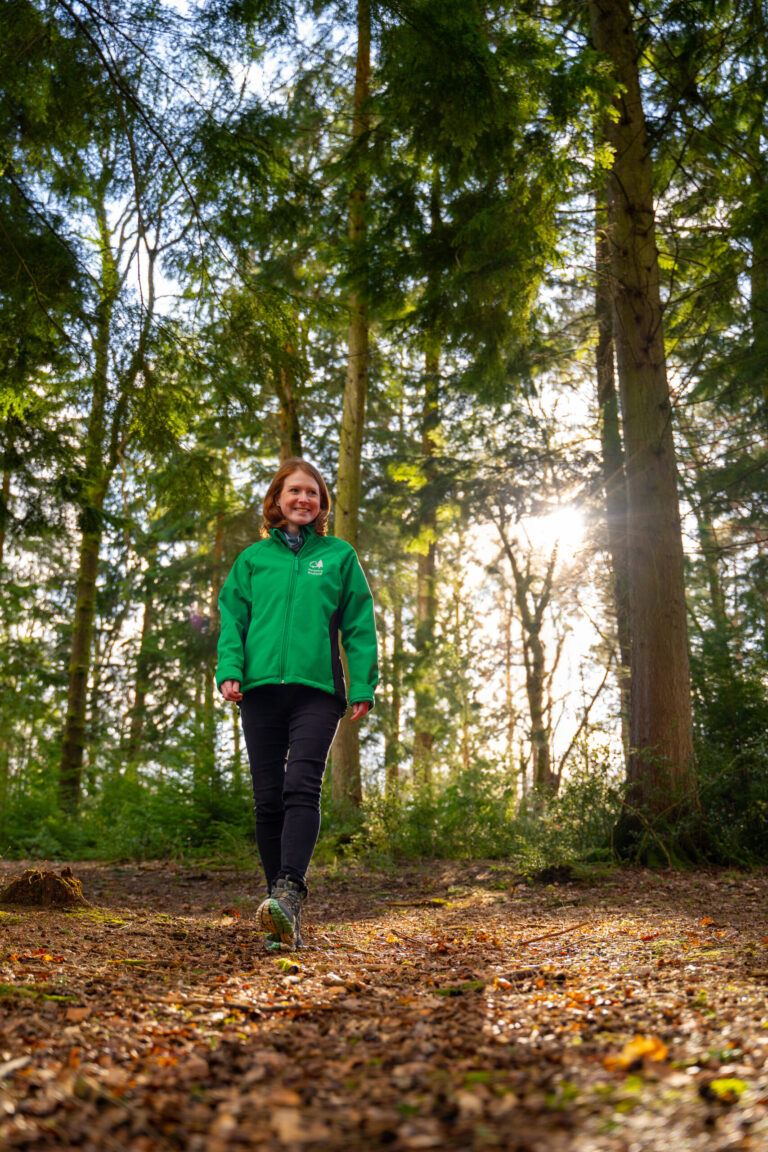
When we think of healing in mental health settings, nature might not always be the first prescription that comes to mind. But for Ellen, nature was more than just a backdrop; it was a lifeline.
In this powerful conversation, Ellen shares her story of inpatient mental health care, her reflections on the environments that hindered or helped, and her deep belief that nature, whether experienced physically or virtually, has an essential role to play in recovery.
Her lived experience, combined with her professional role at Forestry England, offers a rare dual perspective on how we might design with both evidence and empathy in mind.
(Images provided by Ellen Devine from her experiences, and Forestry England)
Personal Story – Finding Light in Confinement
Ellen was just 19 when she entered an NHS-funded mental health facility in Bristol.
She spent over a year there as an inpatient being treated for anorexia and depression.
More recently, Ellen found herself back in the hospital, this time in a more clinical setting. Both of these experiences have shaped her insights, as shared below.
“I was very physically and mentally unwell,” she recalls. “The first hospital was in a beautiful location, surrounded by greenery. But we weren’t allowed to open the windows. We couldn’t go outside often. It was like nature was just out of reach, and that made me feel even more isolated.”
Only permitted outside for an hour on Sundays, Ellen found sanctuary in short walks to Snuff Mills, a woodland park in Bristol, with her mum. These weekly visits were more than a breath of fresh air. They were moments of reconnection, regeneration, and reprieve from an otherwise controlled and clinical world.
“One memory that’s never left me is seeing rainbows made by the light shining through the IV fluid bags,” Ellen shares. “It was something small, but brought little moments of joy. I started to notice these little glimmers, refractions of hope.”
These “glimmers,” as she puts it, became a survival tool. Tiny sensory details that provided comfort in an environment otherwise devoid of warmth.
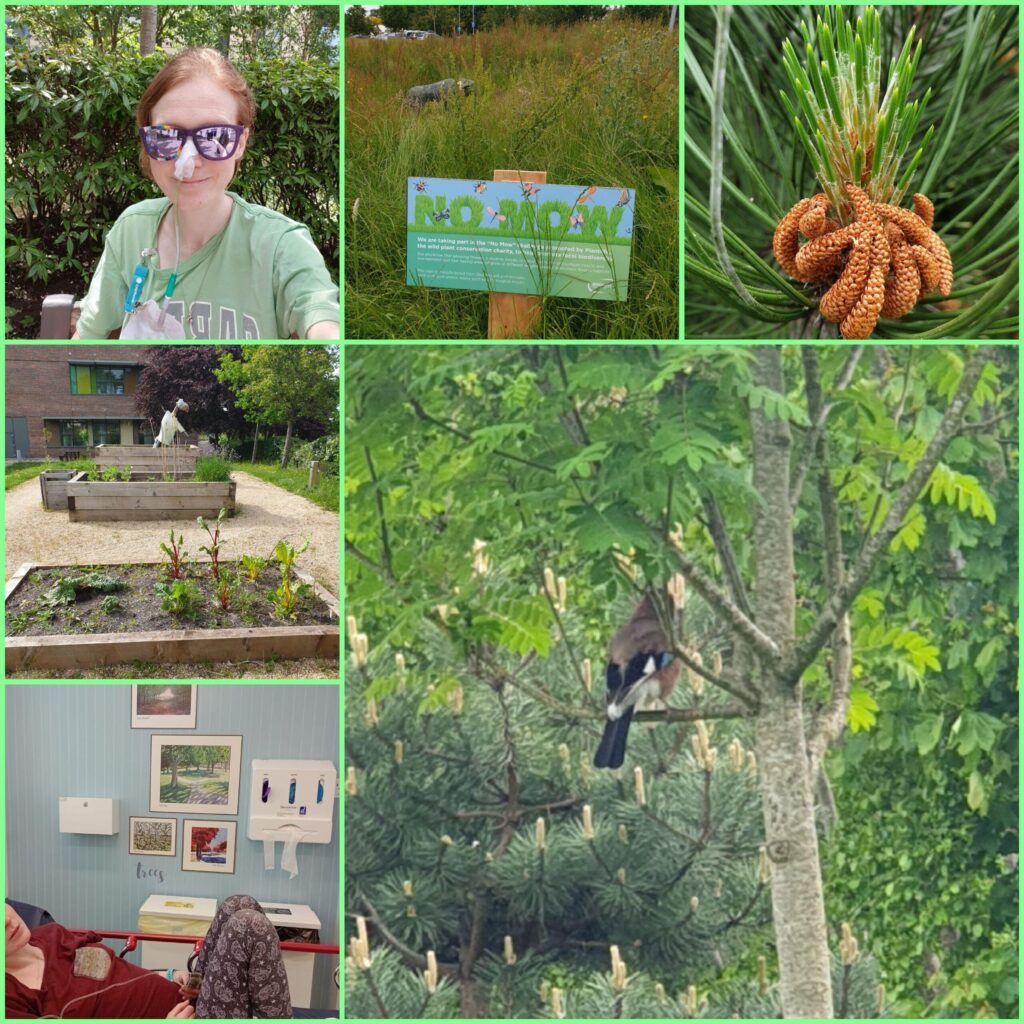
Nature as Therapy – Glimmers of Joy and Hope
In the sterile environment of a ward, joy can feel distant.
However, Ellen learned to look for joy in the small things: the sight of frost on a rooftop, birdsong from beyond the glass, or the warmth of a healthcare assistant who allowed the patients to share some giggles while painting his nails.
“Joy is different from happiness,” Ellen says. “It doesn’t need a perfect day. It can live in one moment, like a rainbow or sunlight through a tree.”
This concept of “glimmers” stands in powerful contrast to “triggers.”
While the latter are often central in trauma-informed care conversations, Ellen believes there’s just as much value in recognising what makes someone feel alive and hopeful.

Design Matters – The Rooms That Heal and the Ones That Don’t
“I’ve seen the difference a window can make,” Ellen says simply. “You could watch the trees sway. Others had no natural light. Those rooms; people didn’t do well in them, and this was recognised by the staff who did their best to rotate patients around window and windowless rooms.”
Ellen’s description is echoed by design research featured in DiMHN’s “Design With People in Mind” series, which underscores the therapeutic impact of natural light, views of greenery, and sensory-rich environments.
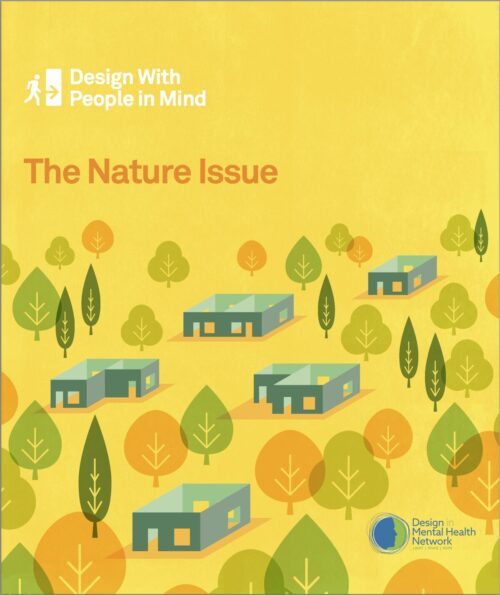
In one space, four TVs played daytime television on a delay, a complete sensory overload. In another, a volunteer played Disney tunes on a piano in the atrium, lifting the entire ward’s mood. These contrasts highlight what design can offer, or deny.
Ellen advocates for giving people a choice in their environments. “What if we could let people pick between a bright, sunny space with birdsong, or a calm, autumnal one with gentle light and sound?” she suggests. “That’s what nature offers us in the outside world, and what we should try to bring indoors when people can’t get out.”
Nature Inside – From Green Walls to Virtual Forests
Today, Ellen works as the Wellbeing Projects Manager at Forestry England. Inspired by her personal experiences, she’s at the forefront of integrating nature into care through digital means.
She helped develop Forestry England’s virtual forest hub, a suite of resources that includes 360-degree forest tours, nature soundscapes, forest bathing videos, creative exercises, and guided meditations.
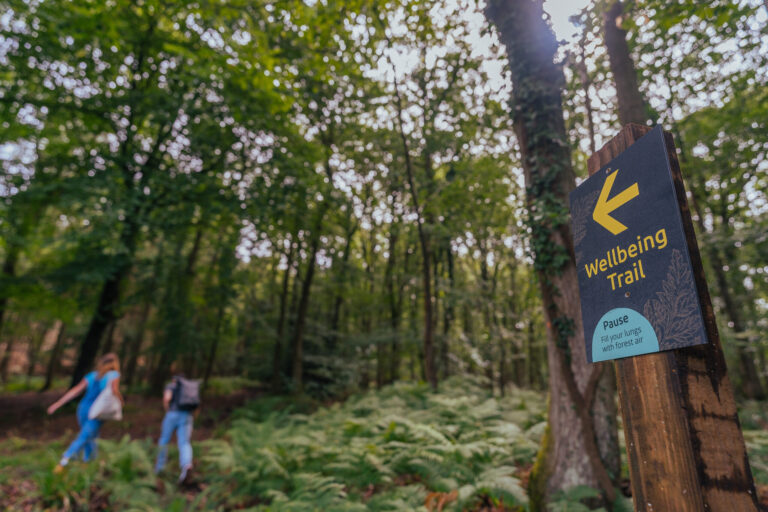
“There are so many reasons why someone might not be able to go outside: chronic illness, mobility, seclusion rules, or lack of staff. So we built something for them, and this was a real passion project for me,” she says.
Hospitals, hospices and community teams across the UK are now using these tools, and feedback has been moving.
“We shared our 360-degree forest videos with Dorothy House Hospice to use in their research study exploring whether virtual reality tools can help with pain management. Similarly, occupational therapists are developing ways to use the nature videos during stroke rehab to bring in calming, mindfulness-based activities alongside physical recovery.”
The research is growing, but the vision remains clear: bringing the forest and nature to people when they can’t access it in person.

Lived Experience in Design – ‘We Know What Helped’
Ellen doesn’t just advocate for access to nature; she advocates for the inclusion of lived experience in design itself.
“You can read about being a patient in a mental health setting, but unless you’ve been there, you don’t know what it’s like when your choices are gone, and your environment is all you have.”
She hopes that by sharing her story, she’s contributing to a more compassionate design future. “It’s a privilege,” she says. “I owe a lot to NHS staff and mental health professionals. If I can make the experience better for someone else, it’s worth it.”
Final Reflections of Hope
When asked what gives her hope, Ellen cites a community mental health centre where all patients and staff have access to allotments.
“The staff are happier. The care is better. Nature helps everyone.”
And to others with lived experience who may not feel ready to speak yet, she offers gentle reassurance:
“Nature shows us that everything happens in its own time. If you’re not ready, that’s okay. There will be a right moment for you.”
Ellen’s story is about reimagining the environments where recovery takes place. It’s a call to architects, clinicians, designers, and decision-makers to design with dignity, choice, and nature in mind.
Good design doesn’t have to be complex. Sometimes, it’s as simple, and as profound, as the ability to see the sky.
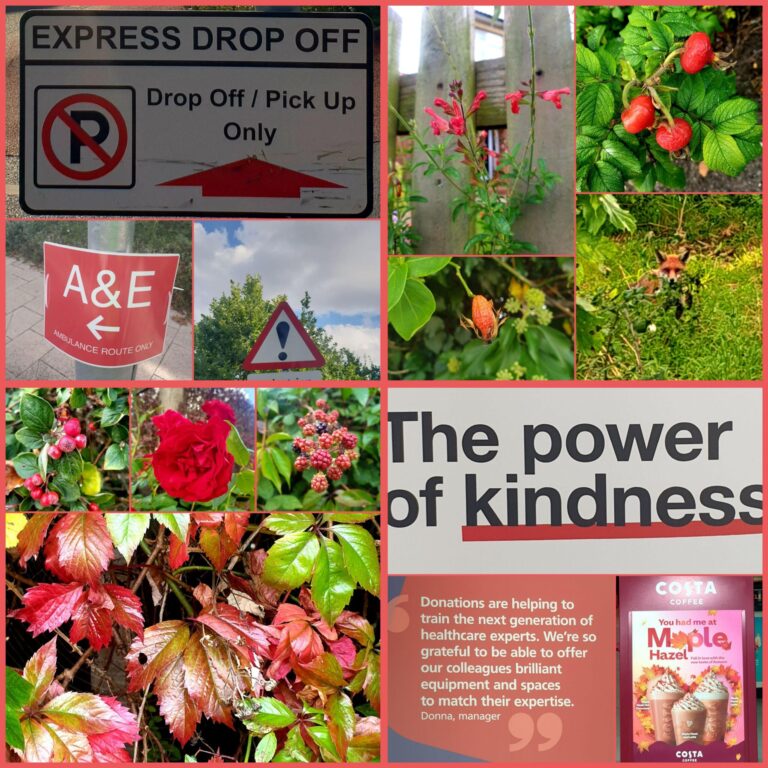
Get Involved
If you are a Lived Experience Expert or are working in a mental health setting and would like to share your insights to help shape better mental health environments, our CEO, Charlotte Burrows, would love to hear from you. Please don’t hesitate to contact us.
Members can access the Design With Nature In Mind Volume of the series here >
Let’s keep asking brave questions, sharing what works (and what doesn’t), and designing with purpose.



